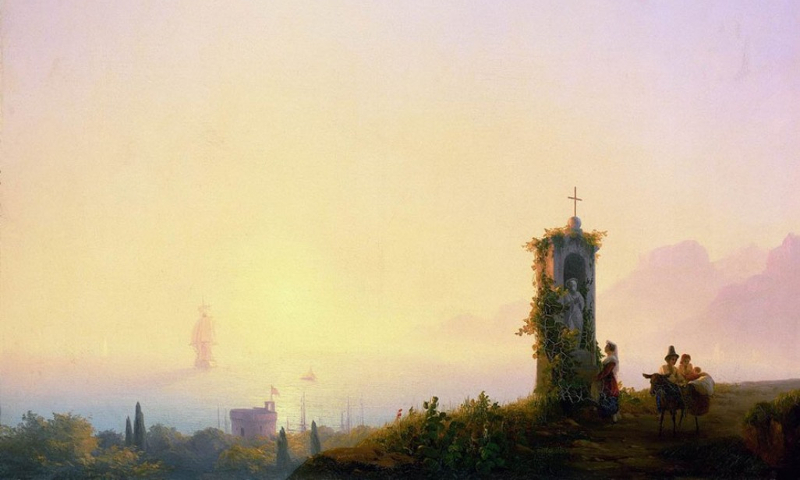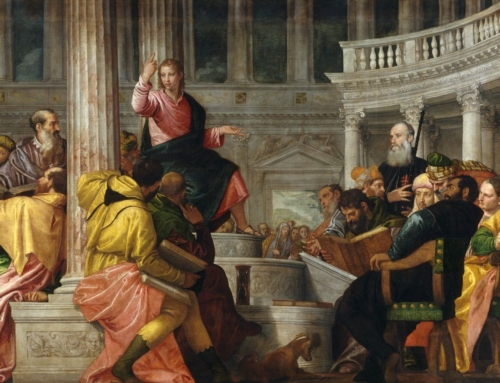Editor’s note: This post was originally published on April 24, 2013.
At the reception of a Catholic wedding I lately attended, a groomsman made his way over to the table where a priest and I were sitting. After enthusiastically shaking our hands, he turned to the priest and said, “Father, the service was so beautiful, it really made me want to believe.” Without so much as a by-your-leave, he turned and began pumping the arms of still further guests. Now, one might be tempted to dismiss this comment as nothing more than a kind remark made by a gentleman who was, in all probability, in his cups. Yet he said it with enough sincerity and conviction (and lucidity, for that matter) that his words gave me pause.
It is doubtless the obsessive compulsive in me, but after assisting in a liturgy like that wedding, I cannot help but review all the little mistakes and missteps. Father should have said this, or better yet, omitted that; the acolyte could have been quicker on the draw; the lector might profitably meditate on the virtues of punctuation; and the organist should most certainly never attempt that particular piece again. Thus occupied in my ruminations, I have no doubt that providence had this groomsman’s comment in store to shake me from my liturgical post-mortem.
Those of us blessed with the good fortune to participate in the Mass regularly can all too easily forget what a powerful channel of grace it is, especially as we become absorbed in the incidentals. The gentleman in question experienced something out of the ordinary at that wedding. He witnessed not only a human ritual that comforts our natural desire for symbolic action and gives meaning to our lives, but much more than that, he witnessed a liturgy that made all attending aware that they were part of something greater than themselves. In the Mass, God breaks through the quotidian, the banal, and the self-referential; events long past are made present, and the heavenly and miraculous is proclaimed to be in our midst.
In a society that seeks to demystify and desacralize everything, it is no surprise that simply observing what takes place in the liturgy can leave an impression, as it apparently did on the groomsman. All the more so is this the case in a Nuptial Mass for a handsome, faithful couple who take their faith very seriously. It is one thing to hear them talk about the Church at the dinner table; quite another to see their beliefs made real and lasting before their friends and family. The Wedding Mass done right, as it was on this occasion, defies everything that our culture says about marriage, the family, and human happiness. No Bridezillas, saccharine love ditties, or celebrations of the self here: their marriage is about being configured to Christ by means of the other and building up the Kingdom of God through a fruitful and generous love.
All this is not to say that details do not matter in the liturgy. To the contrary, without respect for the tradition the atmosphere of mystery and transcendence is lost. The liturgy is not a celebration of you and me—it is our solemn act of worship of the Lord. This has perhaps been obscured at times by some unfortunate trends in the liturgy after the 1960s. To borrow Alan Greenspan’s phrase, there was a fit of irrational (albeit well-intentioned) exuberance after the post-conciliar reforms. What began as a laudable effort to make the riches of the liturgy more accessible to all, in some places devolved into an infatuation for novelty and kitsch. Too often the personality of Father Celebrant took center stage in place of Jesus Christ, and a strong desire to be relevant led to some aesthetic abominations that haunt us still. To profit from the liturgy as the Second Vatican Council would have us, we must approach the liturgy with humility, reverence, and a healthy dose of good taste.
At its heart, the Mass should be a foretaste of heaven, but on this side of paradise, the human element will always be present. Ideally, this should remind us of the Incarnation, as yet another example of how God accomplishes the most sublime and wondrous things through the instrument of fallen mankind. Can we have any doubt what God can do for us in the sacraments when He has guaranteed their efficacy? How quick we are to fall into casual disbelief and distraction by the fallenness of those who act as channels of grace for our world. For all the foibles and failings of Christ’s ministers, we should still be keen to what the groomsman felt at that wedding: something altogether different is at work here, and it lays claim to us in jarring ways. There are deep undercurrents of faith that flow in the Mass, and yet sometimes pass unseen. May our prayer at every liturgy be that of the afflicted boy’s father in St. Mark’s Gospel: “Lord, I believe; help my unbelief!”
✠
Image: Ivan Aivazovsky, Chapel on Seashore







